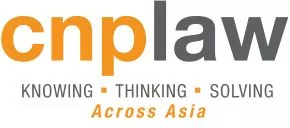The question on whether a company could be considered the author of a work for the purpose of asserting copyright protection was addressed in a recent decision of the Court of Appeal of Singapore involving two publishers of horseracing magazines.
The issue emanated from a claim for copyright infringement and passing off lodged before the High Court by Pioneers & Leaders (Publishers) Pte Ltd against Asia Pacific Publishing Pte Ltd. Pioneers and Leaders is the publisher of Punters' Way magazine while Asia Pacific Publishing is the publisher of Racing Guide magazine.
The claim alleged that Racing Guide copied the table guides containing relevant horseracing information which were first used in Punters' Way. In both magazines, the table guides contained the same set of information (ie. race card, results panel, track work and records of past performances) and were organised in the same sequence. Racing Guide also used a colour coding system in its table guides which is the same as that of Punters' Way. It was further alleged that the design of the front cover of Punters' Way was copied when Racing Guide began featuring images of horses which were forward-facing (instead of the horses' side profile as previously used by Racing Guide on its front covers) similar to the images which Punters' Way had been using for its front cover.
The High Court ruled in favour of Punters' Way. In holding that there was copyright infringement, the High Court found that copyright subsisted in the table guides used by Pioneers and Leaders in Punters' Way magazine and that Pioneers and Leaders was the author of the said work.
The High Court was of the view a company could be an author of a copyrighted work as there was nothing in principle that would prevent an incorporated body from authoring a work. The High Court further held authorship is to be determined based on the facts of each case, particularly the rights sought to be protected and the factual context from which the work came about. The High Court held Section 131 of the Copyright Act which provides a presumption of authorship in favour of the person whose name appears on copies of the work as published was applicable in this case. The name of Pioneers and Leaders was indicated in the copies of the table guides published in Punters' Way and as such, Pioneers and Leaders was presumed the author of the table guides and entitled to assert copyright protection. In determining the duration of the copyright protection, the High Court relied on Sections 28 and 29 of the Copyright Act wherein the relevant period would be 70 years from the expiration of the year of first publication of the work.
The main issue before the Court of Appeal was whether Pioneers and Leaders was entitled to assert copyright protection as the author of the table guides in its magazine.
The Court of Appeal initially discussed whether the table guides featured in Punters' Way may be protected under copyright laws. The Court of Appeal noted that although the table guides contain facts and information which are not protected under copyright laws, the particular creative form in which the information are compiled and presented in the table guides may be protected. The Court of Appeals mentioned that "where someone has expended effort in creating something that has some literary value, it is worthy of protection, irrespective of the precise quantum of intellectual input involved in producing it or the literary merits or novelty of the work product."
The Court of Appeals noted that copyright only subsists in an original work. For a work in question to be deemed original, the author must first be identified and the work must be shown to have originated from the author through the independent exercise of intellectual effort in the creation of the work.
In this case, Pioneers and Leaders contended it was the author of the table guides since its employees were the ones who gathered, organised, selected, ordered and arranged the information contained in the table guides. The Court of Appeal, however, did not accept the said argument and noted that the compilation of information in the table guides are a mere collective effort of individuals organised to facilitate the production of the work and there was no collaboration of the kind contemplated by the definition of joint authorship. The collection of horse-racing information were either computerised, or done by separate people and the evidence presented failed to show any of the individuals involved to be an author or joint author of the table guides. The Court pointed out cases wherein works are produced which involve a high degree of automation, there will be no original work produced for the simple reason that no human authors could be identified which could be the possible explanation as to why Pioneers & Leaders was not able to identify a particular individual or a specific group of individuals as the human author(s) of the table guides.
In its claim for copyright infringement, Pioneers & Leaders did not alleged it is the owner of the copyright in the table guides but instead relied on its claim of being the sole author of the said work. The Court of Appeal made a distinction between authorship and ownership. Authorship refers to the concept of creating, while ownership pertains to the concept of possessing proprietary rights. The Court pointed out that an author need not be the owner and the owner need not be the author.
In determining whether an incorporated body can be considered an author of an original work, the Court of Appeal noted that copyright has always been intended for the protection of authors who are natural persons and not to corporate bodies, and legal rights flowed only from human authorship. This is revealed in the basis used for determining the duration of the copyright protection which has always been based on the human lifespan. On this point, the Court commented "since the duration of copyright protection has always been based on the author's life expectancy and the rationale for post mortem auctoris was so to benefit two generations of the author's heirs, it is patently clear that incorporated bodies were never contemplated to have been "authors" for the purpose of copyright. It would be absurd to suggest that a company could have a lifespan, let alone, generations of heirs. Thus, it must follow that authors have to be living persons." Also referred was the emergence of the European doctrine of droit moral which regarded the author's work to be an extension of his personality and inextricably linked to his honour and reputation. The Court noted this concept naturally leads to the conclusion that the author must be a human being.
The Court of Appeals emphasised that a work created by an employee author has a limited duration which is dependent on the life of the employee even if first ownership vests in the employer. Although the law allows a person other than the author to be the first owner, the question of authorship remains a distinct and important one. The Court further held that if corporate bodies would be allowed to be considered as authors for the purpose of copyright, it could result to copyright protection in perpetuity which is against public policy.
Pioneers & Leaders maintained an incorrect notion of authorship and relied on the fact that since the table guides in question were created and published for a magazine it owned, it could be deemed the author of the work and this entitled them to assert copyright protection. However, as determined by the Court of the Appeal, a corporate body like Pioneers & Leaders cannot be deemed an author of an original work. The author must be a natural person. A company may acquire ownership of copyright if the said legal right is assigned to it by the author of the work. Such assignment, however, does not take away the authorship of the work from the original author.
In a claim for copyright infringement wherein the copyright in the work is put into question, it must be shown that the work is the original creation of a human author. Otherwise, without an identifiable human source, copyright shall be deemed not to subsist in the work. And if the claimant is a company, it is not sufficient to simply rely on the company's ownership of the copyright, the claimant company must be able to point to a human source of the work who is the author, the original copyright owner, and for whom the laws on copyright had been created in the first place.
This update is provided to you for general information and should not be relied upon as legal advice.


